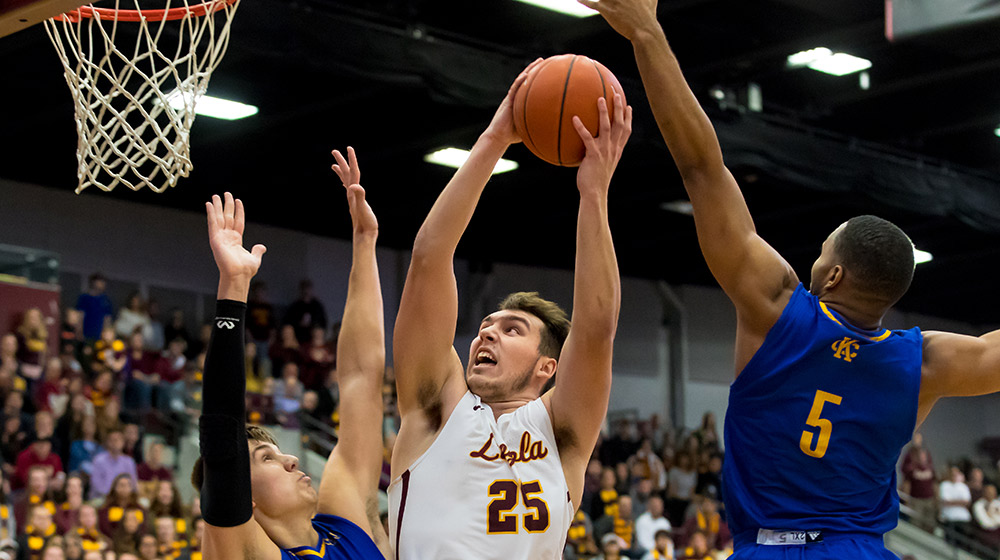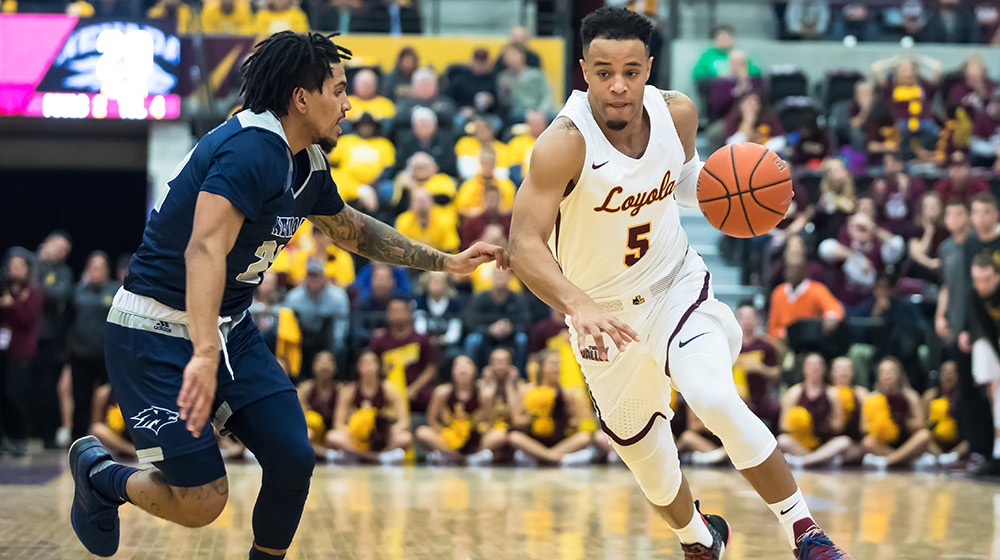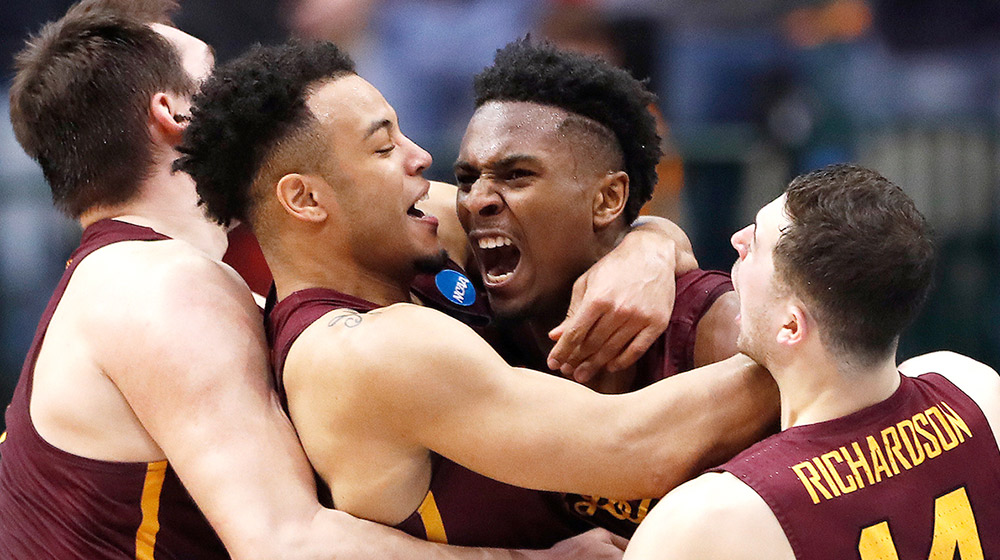Men's Basketball Arch Madness
There’s more to come
Loyola University Chicago’s 18-month roundball roller coaster slowed to a halt over the weekend in St. Louis, when the men’s basketball team bowed out of the Missouri Valley Conference tournament, losing a tight semifinal contest against Bradley, 53-51, effectively ending their NCAA title campaign.
The premature postseason exit was disappointing, to be sure. But it doesn’t change the fact that Loyola’s faithful—old standbys and new converts alike—have caught a nasty case of hoops fever.
Back home, attendance at Gentile Arena is nearly double what it was two seasons ago; sell-outs are common. Undergrads arrive early, sometimes lining up hours before the gates open. Eventually they cram into the student section, donning their omnipresent bi-color scarves, and scream themselves hoarse. The gym is hot, the atmosphere rowdy. Look down one sideline and you’ll see head coach Porter Moser, animated as ever, falling into a deep crouch with a look of incredulousness painted across his face. Around the bend is Sister Jean, parked in her preferred spot inside the player’s tunnel, accepting a parade of well-wishers. Above her head hangs a gleaming 2018 Final Four banner, a constant reminder of all which the school is capable.
“Chicagoans are excited about Loyola basketball. You haven’t really felt that in past years,” says senior Marques Townes. “People have taken notice.”
It’s easy, in other words, to forget how new all of this is.
Growing up in suburban Algonquin, 40 miles from Rogers Park, sophomore Cameron Krutwig knew “honestly nothing” about the Loyola program. He attended one game at Gentile as a kid, tagging along on his older brother’s recruiting visit; Krutwig remembers only that the gym, pre-renovation, felt “a little old, kinda shabby.”
Before 2018, Loyola had played in exactly three NCAA tournament games since the Beatles played Ed Sullivan. They hadn’t registered a sell-out since 2003. Attendance during Missouri Valley Conference (MVC) contests routinely dipped below 2,000. After Townes transferred from Fairleigh Dickinson two years ago, he had to wander around Lake Shore campus with flyers, pleading students to attend home games. Moser would occasionally set up shop in the Damen Student Center, slinging free hot dogs as bribes.





